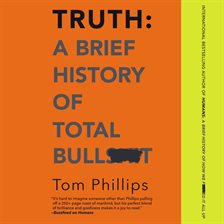Media Literacy Tips
We live in a digital world where information is easily shared and accessible to all ages. More than ever before, we need to test the value of what's online, and learn to look for "fake news."
We're here to help. Your RHPL membership is your key to accessing trusted resources that offer tips and strategies to help you evaluate what you read, listen, and watch.
Fake News, Media Literacy and more.
-
Fake News and Misinformation
-
-
Spot Misinformation Online: Why We Need Accurate Information. Host Andrew Seaman, former Ethics Chair for the Society of Professional Journalists, demonstrates how to determine the accuracy of online information. Use your membership card to create your free LinkedIn Learning account and begin watching this video.
-
Watch documentaries about media literacy and misinformation, including: Fighting Misinformation, United States of Distraction, and Trust Me. Use your membership card to create your free Kanopy account and access these documentaries.
-
Get media savvy with our selection of ebooks on OverDrive. Explore themes of misinformation and media overload in this digital booklist by our librarians.
-
Learn how to debunk fictional news and explores bias (ideal for young adults): Fake New, Bias, and Media Literacy.
-
-
For Parents and Educators
-
-
Media literacy and the classroom: Critical Media Literacy: Volume 2 offers an overview for educators on how to bring media, and media literacy, into the classroom, and how to integrate it into reading, writing, and interdisciplinary instruction.
-
Assess the credibility of webpages using Kermode, a digital tool that helps children build fundamental digital literacy and critical-thinking skills, including author bias and news accuracy.
-
Learning About Media Literacy helps even the youngest readers to develop media literacy tools to understand media.
-
-
More Online Resources
-
-
How to Spot Fake News via Toronto Public Library: A webpage that includes several questions to ask when examining a news article to help determine if it's fabricated content.
-
How to Spot Fake News (and Teach Kids to Be Media-Savvy) from Common Sense Media discusses how to detect false information on the internet, along with other articles on how to talk to kids about news and social media.
-
How to Spot Fake News Infographic from the International Federation of Library Associations and Institutions (IFLA) includes eight simple steps to identify the accuracy of a story or website.
-
Break the Fake is an online workshop created by MediaSmarts that will teach you four easy steps to spotting misinformation. MediaSmarts is Canada's centre for digital media literacy.
-
Academic Journals and Research Databases
We've got research databases with more articles related to media literacy. Find credible information from newspapers, magazines, academic journals, and more with your library membership.
